Tokyo 25
On 13 May, 2024, the Local Organising Committee of Word Athletics Championships Tokyo 25 (WCH Tokyo 25 LOC) held a press event for the public unveiling of the official logo of WCH Tokyo 25, which is scheduled to take place from 13 to 21 September, 2025. Held at the Japan National Stadium in Tokyo, the same venue where the championships will take place, the event consisted of two parts. The first part was a press conference at which the new logo symbolising the WCH Tokyo 25 was presented. In the second part, local elementary school students interacted with women’s javelin thrower Haruka Kitaguchi and men’s long jumper Yuki Hashioka. Both athletes also attended the earlier press conference.
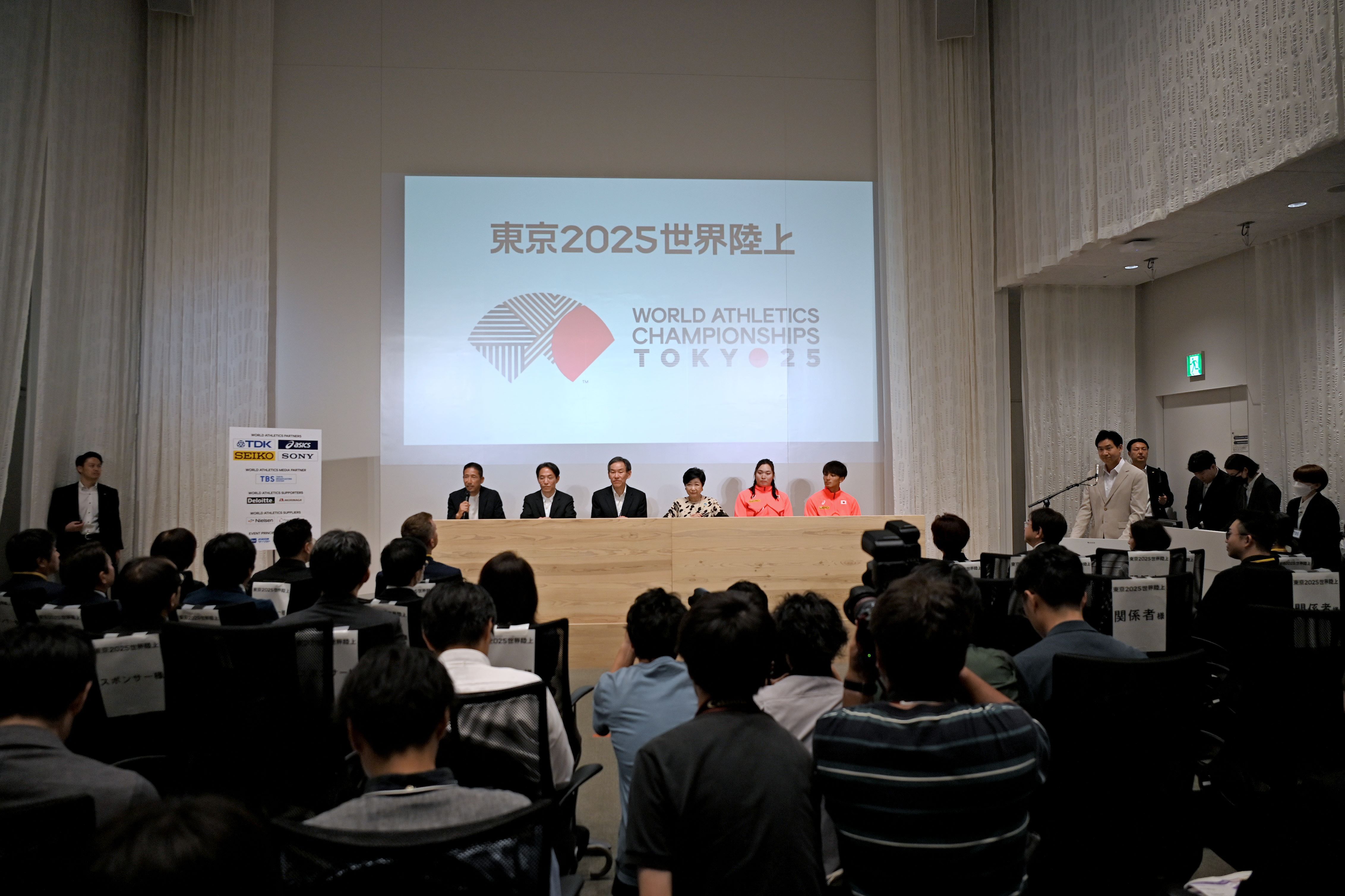
©Tokyo Metropolitan Government
The final choice for the official logo was made from among a total of 368 public submissions accepted from November 2023. The decision was made in accordance with appropriate selection procedures by a Selection Committee comprised of professional designers, top athletes and selected members of the public (public applicant members).
The press conference to unveil the logo was hosted by LOC CEO Takashi Takeichi and Logo Design Selection Committee Chairman Masahiko Kimura, and featured three guest speakers: Governor of Tokyo Yuriko Koike, javelin thrower Haruka Kitaguchi and long jumper Yuki Hashioka.
The conference started with Takeichi CEO, on behalf of the host organisation, sharing details about the official logo for WCH Tokyo 25, the LOC’s design development policy, and the selection procedures. He then expressed his hope that the logo, the result of development efforts involving many people, would inspire competing athletes and become a recognised symbol both in Japan and abroad. The new logo was then introduced to those in present, including World Athletics (WA) Council Member and Vice President of the Japan Association of Athletics Federations (JAAF) Yuko Arimori, the special guest for the day, and representatives of partner companies.
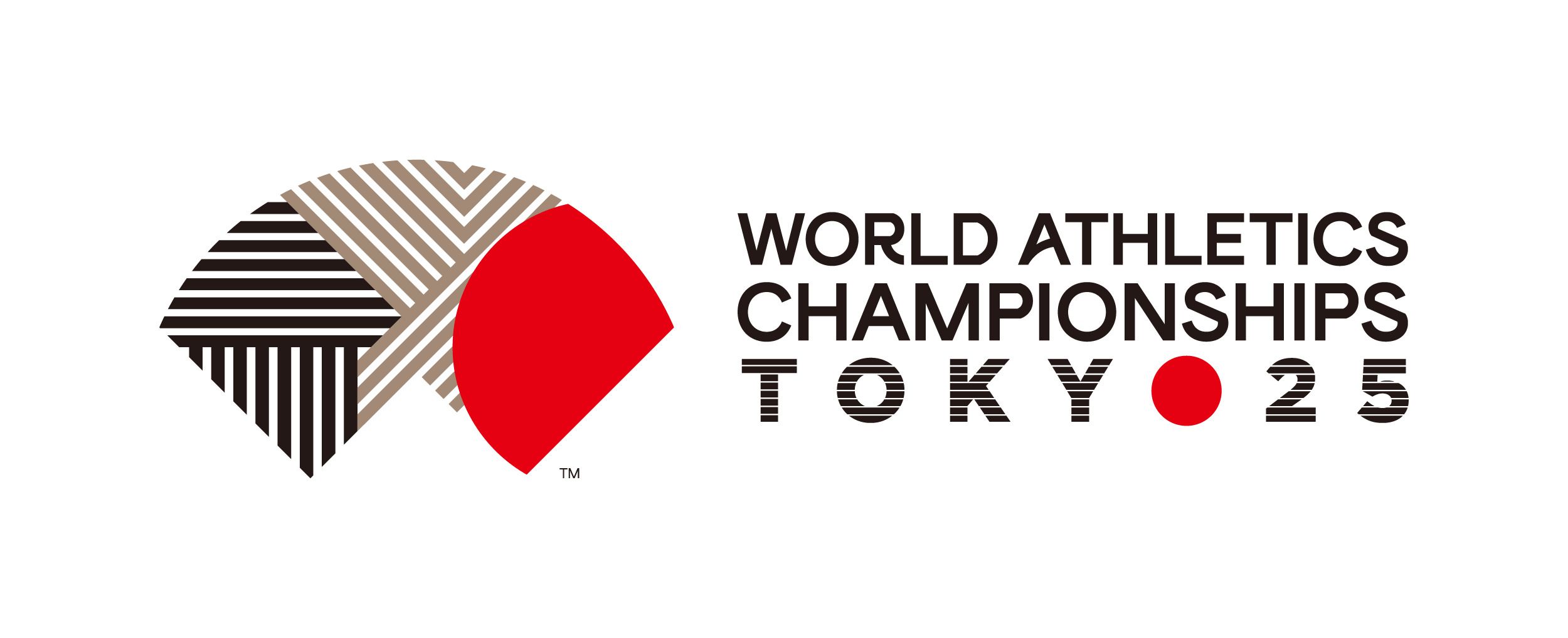
The logo was designed under the theme of “The World – Tokyo – Connecting.” With its outline reminiscent of that of the WA symbol, the body of the fan-shaped logo consists of a pattern of stripes forming the letters “TYO” (city code for Tokyo) in a design intended to represent the connection between athletes from around the world, Japan and Tokyo. The stripes are also suggestive of the lanes of a track and field arena and evoke a sense of speed and dynamism, while also referencing the traditional Japanese sense of beauty. The logo’s three-color palette, meanwhile, is composed of black (T), gold (Y) and red (O), with the black representing the harmonisation of the various colours symbolising different countries, the gold representing a striving to be the best and the red representing the rising sun of the Japanese flag.
The second speaker at the event was Ryo Nakagawa, a creative director and designer and the logo’s creator, who said:
“In 1984, when I was a student of art (at the Osaka University of Arts), I was electrified by seeing the logo of the Los Angeles Olympics designed by Robert Miles Runyan, and began to develop a strong aspiration to engage in logo design for large sporting events. This aspiration has been driving me forward in pursuing my career as a designer. It is a great delight and honour to have my work selected.”
He also described the design concept of his creation and shared some related thoughts, saying:
“Using as my motif the three-letter sequence TYO, the city code for Tokyo, I designed the logo to evoke an image of track and field athletes going ‘faster, higher, farther.’ This design also reflects my hope that athletes from around the world will come together in Tokyo to interact with local people and communities and deliver a successful event.”
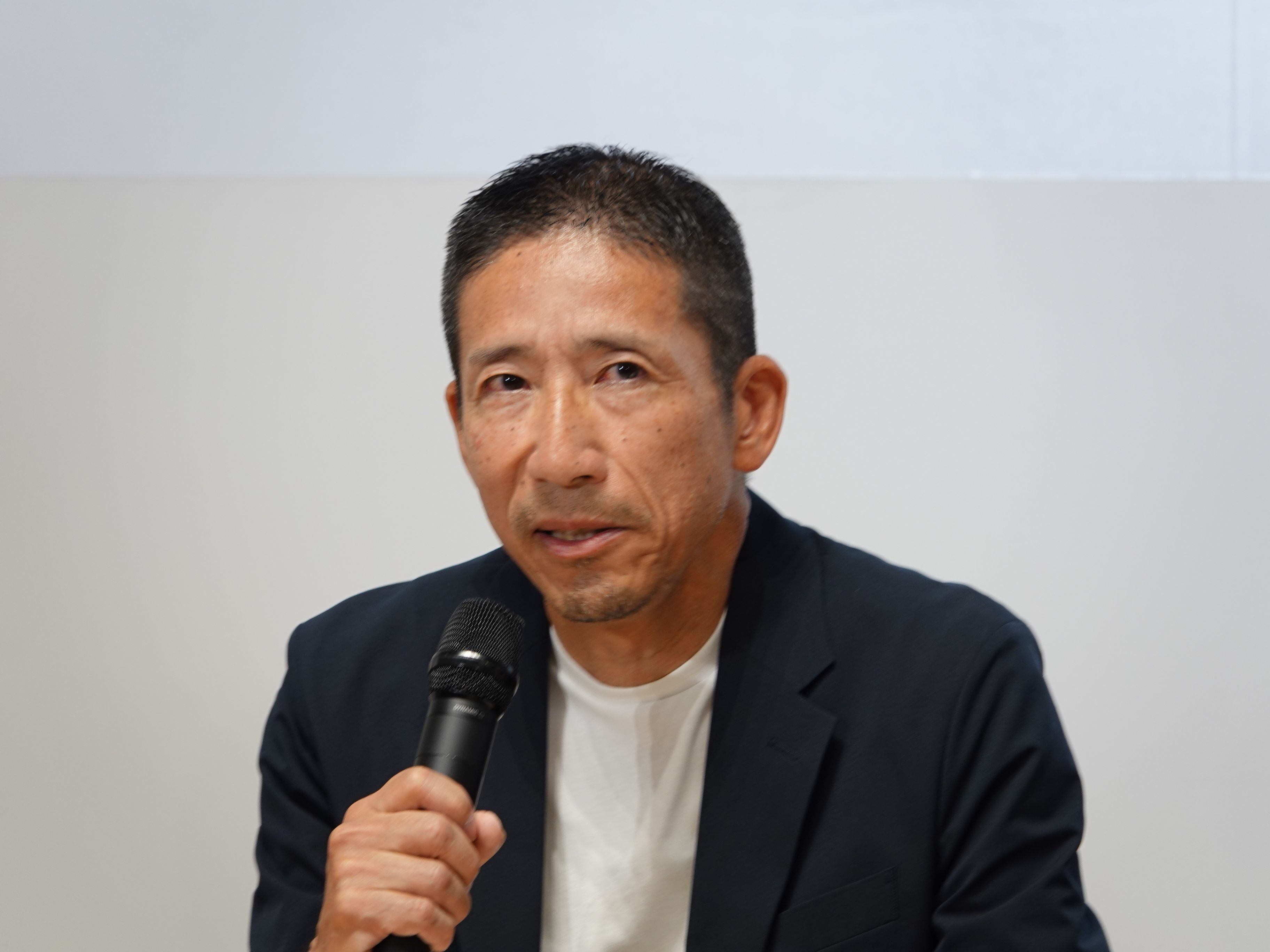
When it was his turn to speak, Selection Committee Chairman Kimura shared a behind-the-scenes glimpse of the selection process. Looking back on the discussions, he said:
“The selected piece achieved a distinctive quality while also evoking a sense of dignity, which went beyond our expectations. Discussions were not necessarily led by the designers. Rather, the athletes and members representing the audience (public applicant members) engaged in the deliberations to a comparable degree. This was in fact a notable characteristic of the committee meeting. In particular, everyone had something to teach the others regarding various issues, which made for an enjoyable and educational experience. And such lively opinion exchanges resulted in a unanimous decision, indicating a successful review process.”
In response to a request for comment, Governor Koike offered words of encouragement, saying:
“This logo encapsulates the essential nature of Tokyo and Japan as well as the dynamism of athletic sports. I hope this image, along with a successful outcome of the event, will remain engraved in the memories of many. I also hope every athlete will be able to compete and perform at their highest level.”
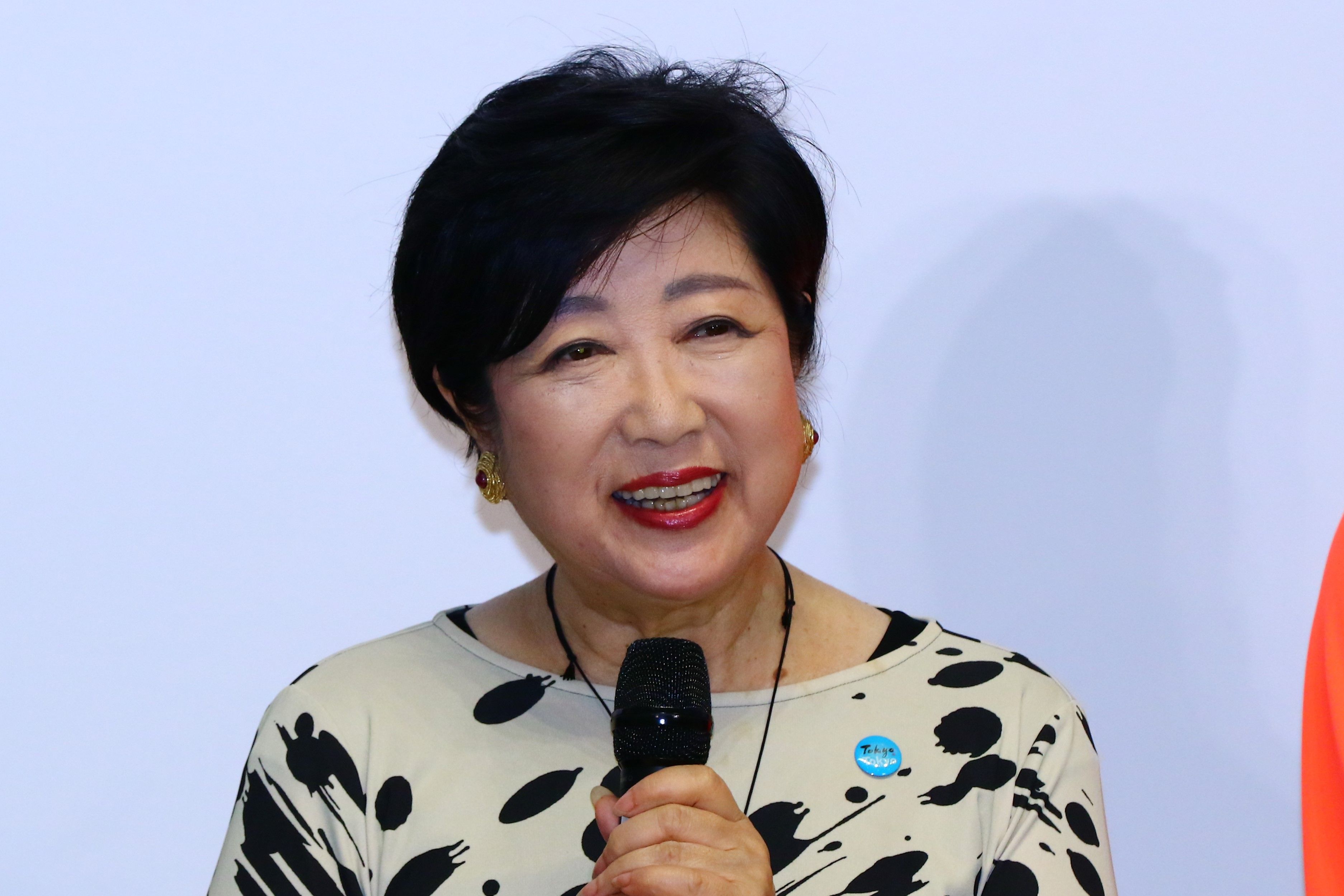
Following the governor, athletes Kitaguchi and Hashioka shared their views on the new logo in their capacity as athlete representatives. (See below for their comments.)
The second part of the event featured an exchange between the athletes and a group of elementary school students. Invited to attend the session and engage in physical activities with Kitaguchi and Hashioka were 73 fourth-graders from Shinjuku City Yotsuya Dairoku Elementary School. The session was overseen by a facilitator from the JAAF Coach Development Committee.

Due to wet weather, the initial plan to use the track field at the Japan National Stadium, the venue for WCH Tokyo 25, was abandoned and the session was held indoors. This did not affect the motivation of the participating children, who greeted the two athletes with a great deal of cheer and excitement. The program started with a mirroring game (where players imitate or mirror another person’s movements), with participants moving their body to try to imitate the motions of each of the athletes as they demonstrated slow-motion performances of a long jumper in the air and a javelin thrower. They also played a special janken (rock-paper-scissors) game using their whole body. As they wrestled with each challenge, the expressions on the children’s faces became more earnest and they began to shout out in joy. Seeing how much the children were enjoying themselves, the athletes beamed.

©Tokyo Metropolitan Government
At the end of the session, the two athletes addressed the children without a microphone, sharing their personal messages. “Today, I had a short but very sweet time working with you,” said Kitaguchi. “I specialise in the javelin. I hope that many of you will come to the stadium to see me compete in the event. I would be happy to see you again soon.”
The facilitator asked the attendees to raise their hand if they wanted to watch Kitaguchi compete at the stadium, and their enthusiastic response delighted everyone present. Speaking after Kitaguchi, Hashioka also expressed his hope that the children would come to see him compete in the long jump event. Referring to the competitive men’s long jump record of more eight meters, he explained that the distance was comparable to the width of a standard classroom, if not greater. This brought exclamations of disbelief from the astonished children, to which Hashioka responded by saying, “Keep this in mind, and come to the competition venue to cheer me on,” before thanking the participants. The children expressed their appreciation loudly and cheerfully with a big round of applause for the guests. The short but no doubt memorable program was thus concluded.
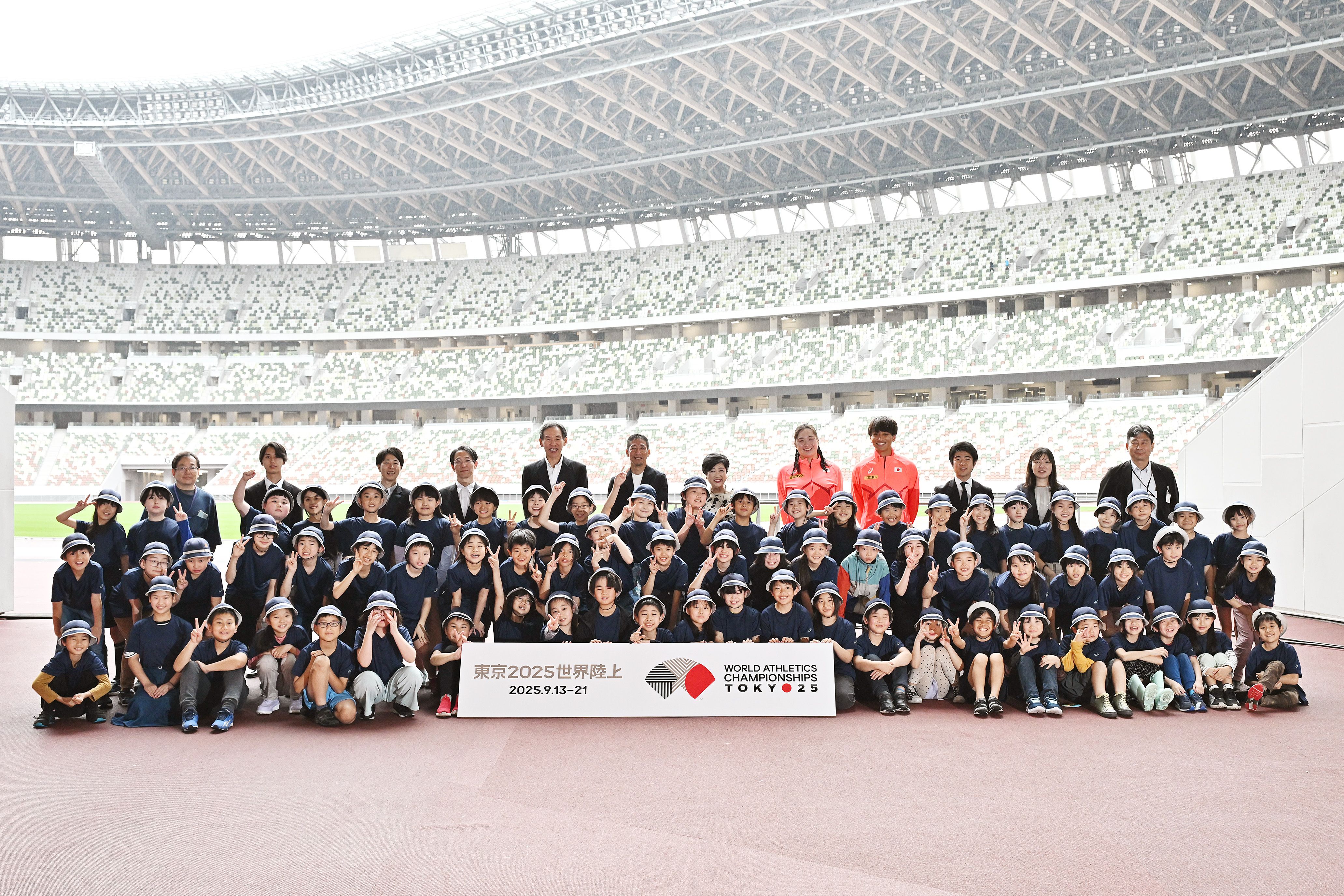
Comments of athletes attending the press conference
Haruka Kitaguchi
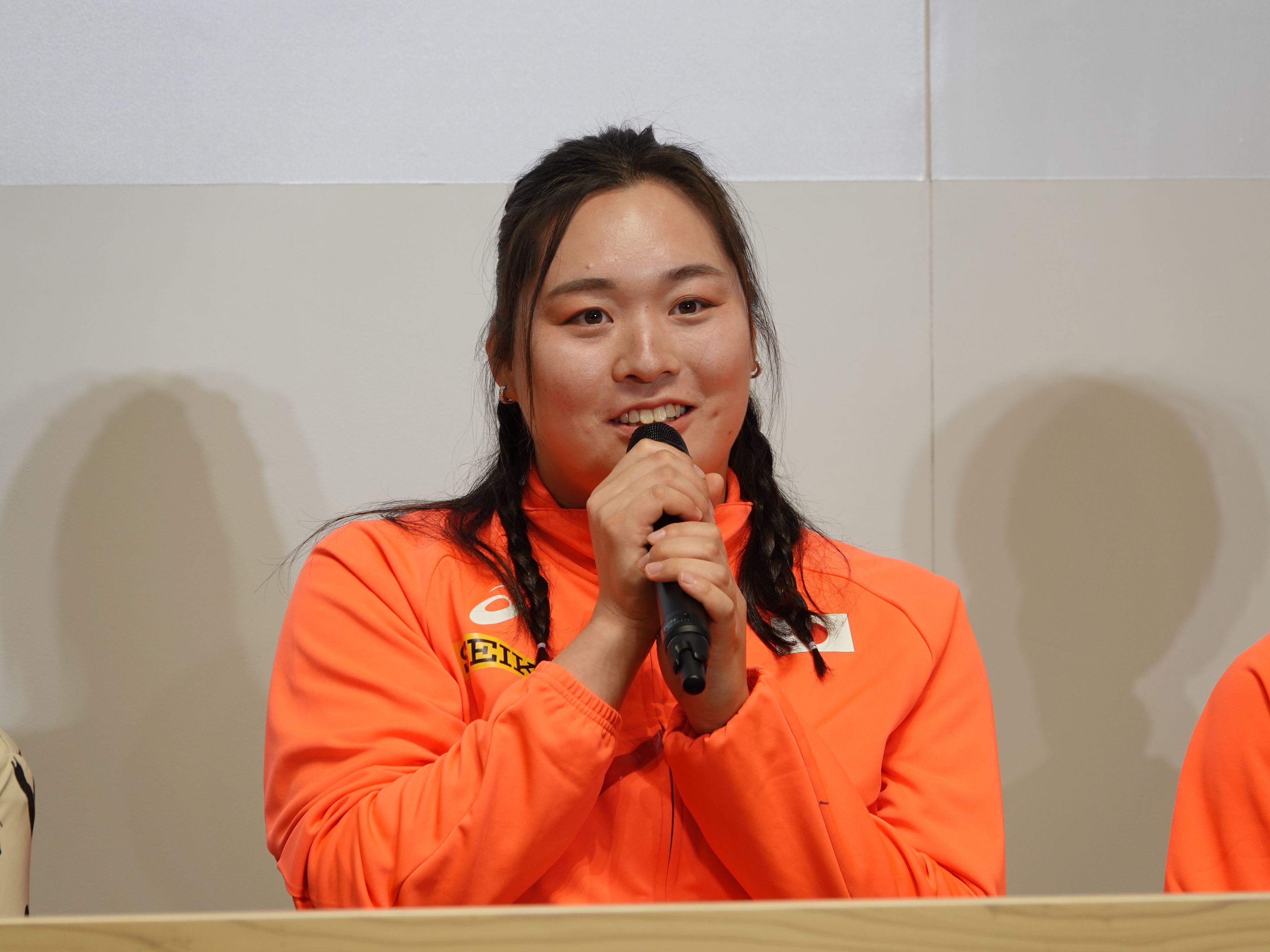
I watched the video introducing the new logo. It delivers a thrilling sense of speed and after seeing it I am starting to feel the pressure, even though the competition is still a year away. Seeing the element of the rising sun contained in the logo, I recalled a funny experience I had when I first began to compete overseas. What happened was I tried to do a machine translation of a news article about me written in a foreign language. One of the sentences, which began “Kitaguchi from Japan,” got translated as: “Hi izuru kuni no Kitaguchi” (“Kitaguchi from the land of the rising sun”).
I am very happy that we have this well-designed logo that can symbolise both Japan and track and field athletics. Imagining the many competitive athletes from around the world aiming to come and compete in the place symbolised by the logo, I will brace myself for the coming competition and make sure I prepare adequately.
I have recently begun to compete mostly in Europe, which has unfortunately resulted in my having fewer opportunities to compete in the presence of Japanese sports fans and supporters. So I wholeheartedly hope that lots of Japanese people will visit the stadium to watch the WCH Tokyo 25 competition. In addition to the competitive events, the meeting will also feature a number of non-competitive, fun programs. And some of the events can be fully enjoyed by spectators with no technical knowledge, which will hopefully lead many who are unfamiliar with track and field athletics to become interested in it. I hope that many different people will enjoy the competition in various ways.
Yuki Hashioka
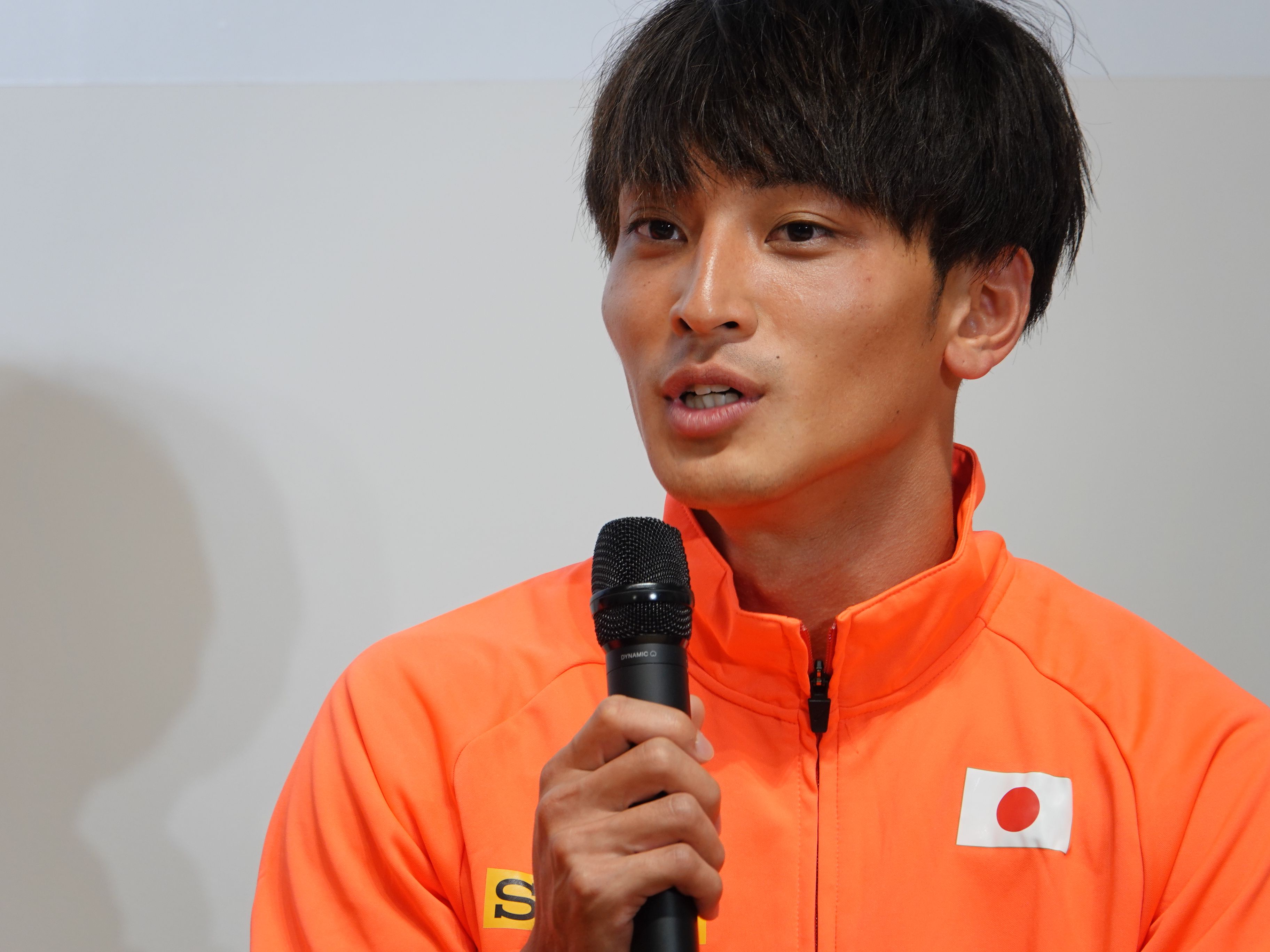
I am especially impressed by the exquisite effect of combining a traditional Japanese style of imagery with stripes representing the lanes of a track. I take particular note of the “O” in TYO being shaped like the image of the rising sun, which is strongly suggestive of Japanese style. I like the design of the logo, which is both traditional and sophisticated. In 2025, this logo will become known widely around the world as a symbol of the WCH Tokyo 25. Imagining this, I feel proud of the logo while also starting to feel nervous, even though the competition is still some way off. I must apply myself better. This logo has a wondrous motivating power.
I hope that lots of Japanese people will take advantage of the precious opportunity presented by Tokyo hosting the WCH Tokyo 25 and will come to the stadium to watch the competition, and I will endeavour to contribute to delivering a successful event. The WCH Tokyo 25 is the world championships for track and field athletics, and thus has a unique atmosphere that is different from that of the Olympic Games. Individual athletes are focusing on their event in pursuit of being the world’s best. At the stadium, you can watch these athletes competing against each other and you can read the build-up of tension on their faces. This will be a meaningful experience available only to those who visit the venue in person. I hope that many people will come to the stadium to have such memorable experiences. And for this purpose, athletes must do the best they can.
The athletes’ comments were edited based on their remarks at the press conference and subsequent interviews.
Translated into English. Originally written and photographed by Ikumi Kodama (JAAF media team)
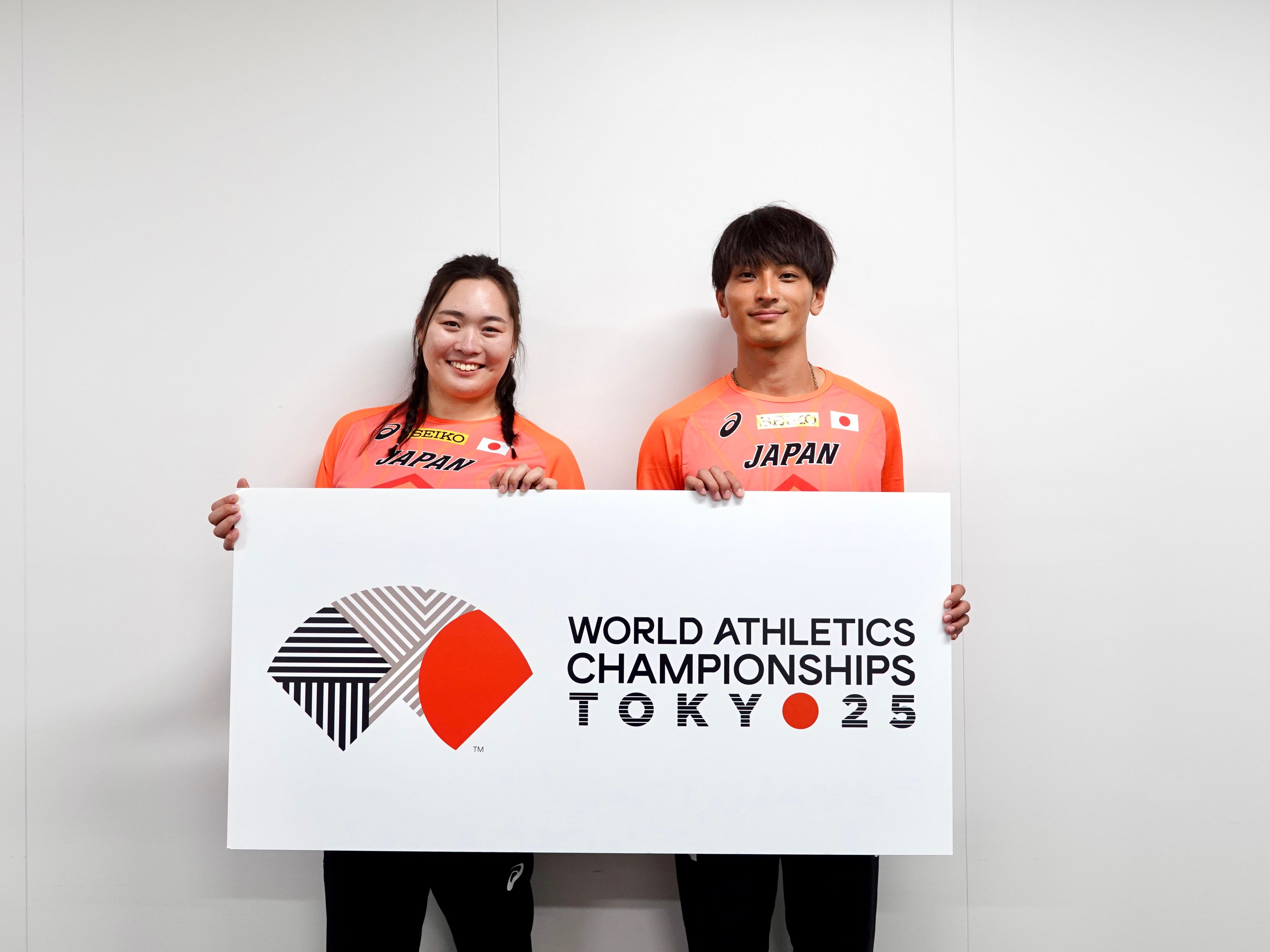
Video archive
On your marks!
Get set and be sure not to miss the ticket release for the World Athletics Championships Tokyo 25!
Register below to be notified about tickets going on sale and to receive priority access.



















